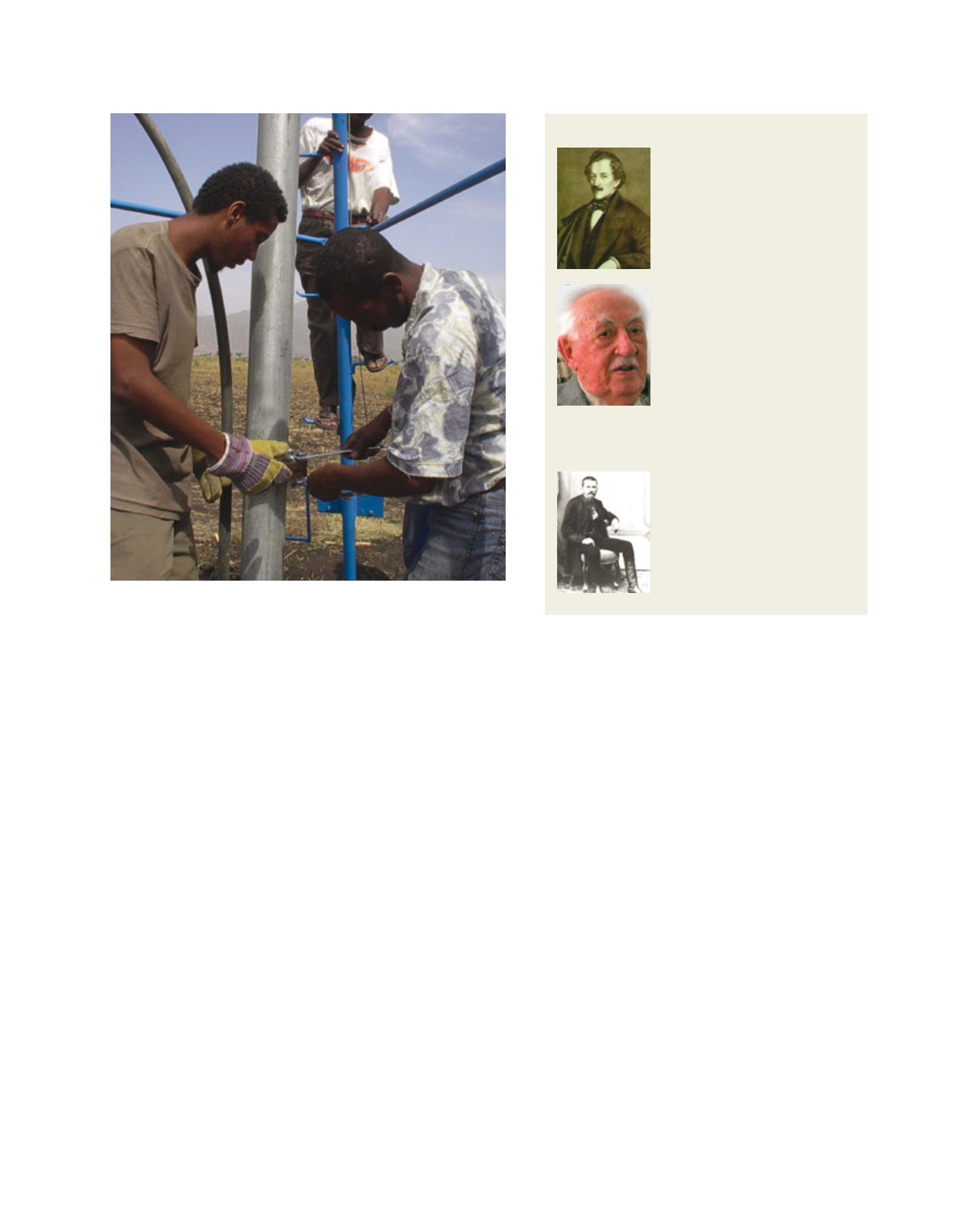

[
] 210
W
ater
C
ooperation
, S
ustainability
and
P
overty
E
radication
the construction of the River Moulouya and Rabat region
irrigation systems. Since the 1980s Hungarian consultants
VIZITERV and MÉLYÉPTERV have taken part in differ-
ent irrigation projects in Algeria and Tunisia (irrigation of
palm groves), Yemen (Tihama and Taiz projects), Sudan
(Djebel Marra project) and Iran (Gorgan Valley).
Recent water related development projects implemented
by Hungarian Government assistance include the creation
of a water management and irrigation system in the Kobo
Girana valley in Ethiopia as well as training for local experts
in the framework of development cooperation. Hungary
also contributed to the establishment of a sanitation centre
providing basic hygienic facilities and clean water in one
of the slum areas of Mombasa in Kenya. Hungarian water
experts developed the framework for the Herlen river basin
inMongolia and are helping to develop a complex strategy
for the water management of the EasternMongolian drain-
age basin to mitigate the effects of climate change.
Education and capacity building are of critical impor-
tance for the ability to apply new technologies aimed at
efficient use of resources. Therefore, Hungary intends
to take a leading role in disseminating knowledge about
sustainable water use and increase consciousness of water
at all levels. Hungary supports multilateral efforts to
promote education on water related issues, particularly
sanitation. Hungary is ready to offer capacity building
trainings, and share knowledge in the field of sustainable
water resource management.
Management Master Plan of Mongolia and the regional master plans
for the following basins:
• Mongolian Great Lakes
• River Khovd
• River Dzabhan
• River Kherlen (Kerulen)
• Ongijn
• Taats
• Baidrag rivers.
The Mongolian parliament appraised this activity as the ‘Project of
the Century’ many years after the Hungarian experts had finished
their projects and the Hungarian-Mongolian Water Management
Cooperation Agreement was renewed in 2008. Hungarian experts have
executed master plans in Tanzania, Nigeria and Morocco, where they
also managed reservoir construction. Experts have similarly served as
high-level advisers in Algeria and Kuwait. By 1980, Hungarian hydrolo-
gists and engineers had assisted Mongolia in solving water problems on
the steppe. Hungarian engineers and hydrologists trained and worked
closely with Mongolian young professionals. By 1970, 225 new wells
had been drilled to a depth of 100-200 metres. In connection with water
prospecting, the experts executed geophysical exploration on an area of
21,000 km
2
. In the 1970s Hungarian experts provided help in Viet Nam
and in Mongolia, installing MA-200 type irrigation equipment (about
150 pumping plants across Mongolia, and in the Ba Vi irrigation system
in Viet Nam). They provided training and services for maintaining the
installed irrigation capacities. InMorocco, in the frame of international,
technical and scientific cooperation, Hungarian experts were involved in
Hungary’s water pioneers
Pál Vásárhelyi (1795-1846)
elaborated, among others, the
plans of the Iron Gate (Vaskapu)
on the River Danube regulation
and the River Tisza regulation.
By 1846 he had prepared a
comprehensive regulation concept
currently known as Vásárhelyi’s
Tisza Regulation Plan.
As an engineer of hydraulics,
the name of Emil Mosonyi
(1910-2009) is connected to
dams and hydropower plants
around the world. He was
honorary professor at a number
of universities and a member of
various science academies. The
University of Auckland in New
Zealand established the Mosonyi
Prize to honour his work in the
field of sustainable hydropower
development.
In the second half of the nineteenth
century, Vilmos Zsigmondy (1821-
1888) drilled a well in Budapest
(City Park). The well, which was 970
metres deep and had a capacity
of 2,200 litres per hour at 74
o
C,
was the second largest in Europe
at that time and was considered
something of a sensation.
Images:
The Hungarian Water and Sanitation Industry in the 21st century,
HITA, 2013
Water-related projects have been at the centre of Hungarian international
development assistance for decades
Image: VIKUV Water Prospecting and Drilling Joint-stock Company


















